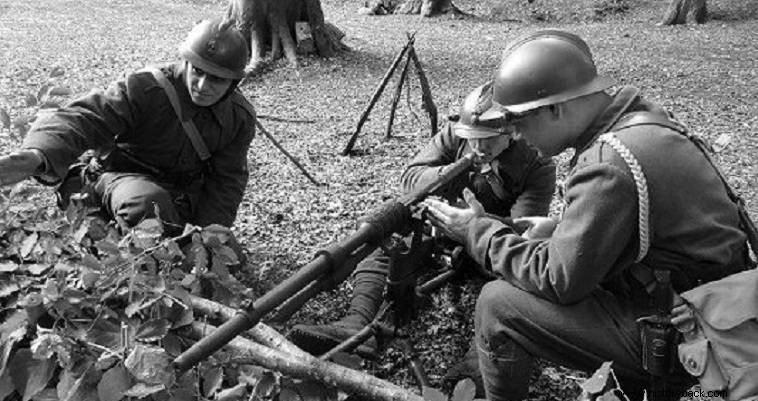
The French infantry constituted the spearhead of the French Army in 1940, as well as its bulk. It was considered, by non-praisers, elite but this was only partially true. In 1918, with the end of World War I, the French Army was exhausted, but victorious. After the halts of 1917 discipline had been restored, and with serious artillery support in every battle, the French infantry performed superbly in the last battles of the summer and autumn of 1918.
The infantry was also based on this tradition during the interwar period and relied on it when World War II broke out. The French infantry was organized into Infantry Divisions (DIs). The divisions were distinguished into active army MPs, i.e. fully equipped and manned formations, with men of military age, well trained.
Type A MPs were conscript formations but had an active core and number of men under arms. Worse were the Type B MPs which were also enlisted formations without active elements. Each MP extended three infantry regiments, each of three battalions.
Each regiment fielded a staff, headquarters company, relay platoon, motorcycle platoon, engineer platoon, anti-tank gun company, each with a mortar platoon and two anti-tank platoons, each with three 25mm guns.
Each infantry battalion had a staff, a command platoon, a relay team, three rifle companies, a heavy weapons company with four machine gun platoons (each with four machine guns – a total of 16 per battalion), a mortar platoon (two 81mm tubes) and an anti-tank platoon, with two 25mm guns. Each infantry company extended three platoons and had 12 machine guns and one 60mm mortar.
This provision was however theoretical as many units were seriously short of armament, especially units belonging to type A and especially type B MPs. There were serious shortages of anti-tank guns and some units were allocated anti-tank guns instead of the satisfactory, for 1940 25mm, 37mm infantry escort guns of the 1st PF, which could not do much against German tanks due to the low projectile exit velocity.
The infantry company had 12 7.5mm Chatellerault FM 1924/29 machine guns, 156 MAS 36 rifles, also 7.5mm and one M1935 60mm Brandt mortar. The 81mm mortars were also Brandt model 27/31. Also each company had 16 VB system grenade launchers.
MAS -38 submachine guns were also available Type A and Type B formations, however, also had older weapons, such as Lebel and Berthier rifles, Hotchkiss M1922 machine guns or earlier. The main machine guns were the St. Etienne and the Hotchkiss.
The men wore a khaki uniform, leather accessories with cartridge cases, a water tank, a revolver and a bayonet. The long sleeve worn on the outside of the sleeve folded in front. They also wore gaiters and low boots. The officers wore boots. The helmet was Adrian M1926, although earlier models were also used.
Morale in active MPs was generally high and these divisions performed well in combat, as did their North African counterparts, but were doomed by developments beyond their control.
In the critical sector of the Meuse and the Ardennes, the French command had deployed mainly type A and type B MPs that lacked morale, armament and training with the known results. Had the infantry followed the French tanks in the counterattack at Dinan, the Battle of France might have taken a different turn.
After the defeat in the first phase of the German attack, the so-called Light Infantry Divisions were formed from the remains of destroyed units, which had two infantry regiments and one artillery regiment, usually of two divisions.
In general the French infantry found itself unprepared in 1940 to face the German Army. But the responsibilities weigh much more heavily on the top management than the simple rifleman who went into battle without the necessary moral, especially, supplies.
